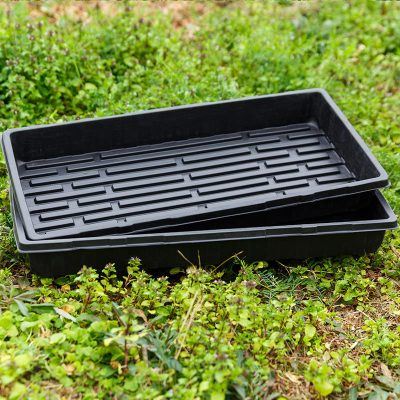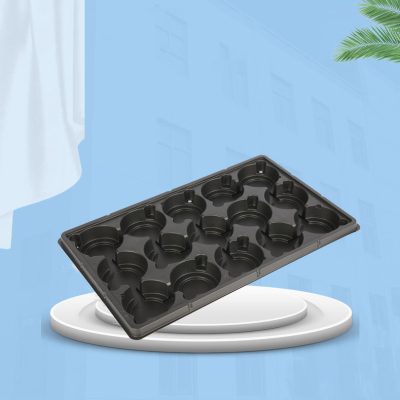When choosing plant trays for different planting needs, there are a few factors to consider. Here are some key points to help you make the right choice:
- Tray Size: Consider the size of the plants you will be growing and the available space. Smaller trays are suitable for starting seeds or growing small plants, while larger trays can accommodate bigger plants or multiple seedlings. Ensure that the tray is large enough to provide adequate space for root growth and proper plant development.
- Cell or Compartment Configuration: Plant trays come in various cell configurations, such as square, rectangular, or round cells. Consider the type and size of the plants you are growing to determine the appropriate cell size. Smaller cells are suitable for small plants or starting seeds, while larger cells are better for larger plants or transplants.
- Depth of Cells: The depth of the cells in the plant tray is important, especially for plants with deep root systems. Ensure that the cells are deep enough to accommodate the roots without restricting their growth. For plants with shallow roots, shallower cells may be sufficient.
- Material: Plant trays are commonly made of plastic or recycled materials. Plastic trays are durable, lightweight, and often reusable. Recycled or biodegradable trays are environmentally friendly options. Consider the durability, longevity, and sustainability of the material when making your choice.
- Drainage: Proper drainage is essential to prevent waterlogging and root rot. Look for plant trays with drainage holes or bottom trays that collect excess water. Adequate drainage helps maintain the right moisture levels for healthy plant growth.
- Tray Design and Construction: Consider the overall design and construction of the plant tray. Look for sturdy trays that can withstand regular use and handling. Ensure that the tray is easy to clean and sanitize to prevent the spread of diseases.
- Compatibility with Growing Systems: If you are using specific growing systems, such as hydroponics or aeroponics, ensure that the plant trays are compatible with the system. Some systems may require trays with specific features, such as channels for nutrient solution flow or aeroponic misters.
- Reusability: Consider whether the plant trays are reusable. Reusable trays are a more sustainable option and can save you money in the long run. Look for trays made from durable materials that can withstand multiple growing seasons.
- Budget: Consider your budget when choosing plant trays. Prices can vary depending on the size, material, and quality of the trays. Determine your needs and allocate a budget that allows you to purchase trays of suitable quality without overspending.
By considering these factors, you can select the right plant trays that meet your specific planting needs, whether it’s for seed starting, transplanting, or growing plants in a controlled environment.








